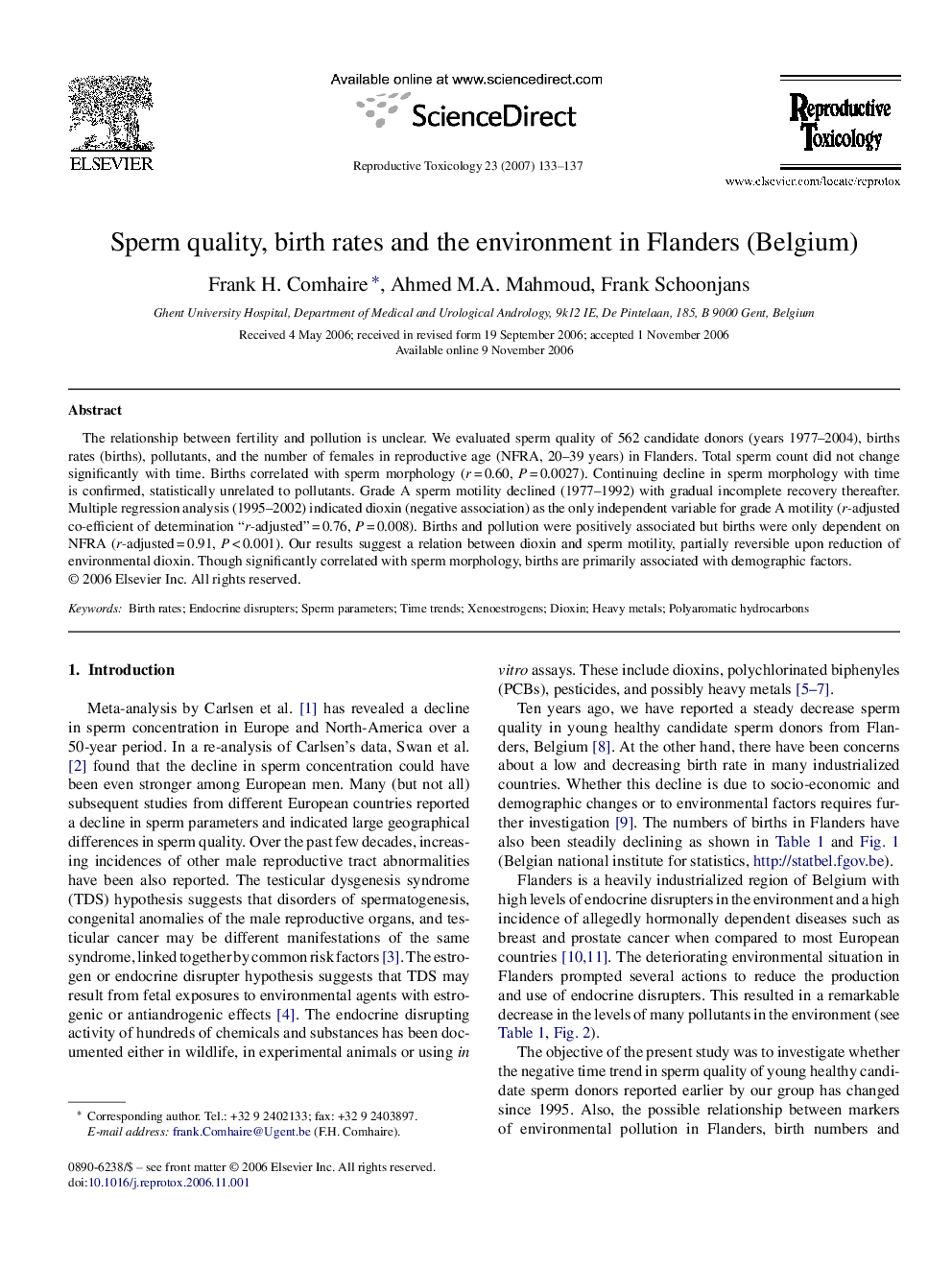| Article ID | Journal | Published Year | Pages | File Type |
|---|---|---|---|---|
| 2595284 | Reproductive Toxicology | 2007 | 5 Pages |
The relationship between fertility and pollution is unclear. We evaluated sperm quality of 562 candidate donors (years 1977–2004), births rates (births), pollutants, and the number of females in reproductive age (NFRA, 20–39 years) in Flanders. Total sperm count did not change significantly with time. Births correlated with sperm morphology (r = 0.60, P = 0.0027). Continuing decline in sperm morphology with time is confirmed, statistically unrelated to pollutants. Grade A sperm motility declined (1977–1992) with gradual incomplete recovery thereafter. Multiple regression analysis (1995–2002) indicated dioxin (negative association) as the only independent variable for grade A motility (r-adjusted co-efficient of determination “r-adjusted” = 0.76, P = 0.008). Births and pollution were positively associated but births were only dependent on NFRA (r-adjusted = 0.91, P < 0.001). Our results suggest a relation between dioxin and sperm motility, partially reversible upon reduction of environmental dioxin. Though significantly correlated with sperm morphology, births are primarily associated with demographic factors.
